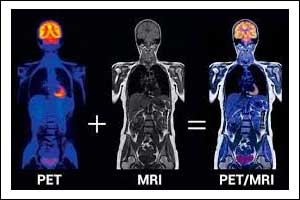- Home
- Editorial
- News
- Practice Guidelines
- Anesthesiology Guidelines
- Cancer Guidelines
- Cardiac Sciences Guidelines
- Critical Care Guidelines
- Dentistry Guidelines
- Dermatology Guidelines
- Diabetes and Endo Guidelines
- Diagnostics Guidelines
- ENT Guidelines
- Featured Practice Guidelines
- Gastroenterology Guidelines
- Geriatrics Guidelines
- Medicine Guidelines
- Nephrology Guidelines
- Neurosciences Guidelines
- Obs and Gynae Guidelines
- Ophthalmology Guidelines
- Orthopaedics Guidelines
- Paediatrics Guidelines
- Psychiatry Guidelines
- Pulmonology Guidelines
- Radiology Guidelines
- Surgery Guidelines
- Urology Guidelines
Current Scenario of Hybrid PET-MRI of the Heart

The researchers in a review published in the European Heart Journal - Cardiovascular Imaging, have reviewed the use of positron emission tomography/magnetic resonance imaging (PET-MRI) for cardiovascular disease. This novel imaging modality combines the complementary ability to quantify metabolism, perfusion, and inflammation by PET with morphological and functional assessment possible with MRI.
"The fusion of these two modalities into a single imaging platform not only represents an opportunity to acquire complementary information from a single scan but also allows motion correction for PET with a reduction in ionizing radiation," write the authors.
The authors have specified the cardiac conditions where Hybrid positron emission tomography-magnetic resonance (PET-MR) imaging can be effective with its benefits and shortfalls. These are:
- Myocardial perfusion imaging-MRI and PET perfusion imaging are both in routine clinical use for ischaemia testing with similar levels of evidence in European Society of Cardiology guidelines for the diagnosis of stable angina.
- Coronary imaging -Non-invasive coronary imaging is the domain of cardiac CT but both MRI and PET provide relevant information on coronary arterial pathology, in particular, atherosclerotic plaque, and their combination holds promise for risk stratification.
- Cardiac sarcoidosis- Sarcoidosis is a multisystem granulomatous disorder that causes arrhythmia, conduction disease, cardiac failure, or sudden cardiac death. No universally accepted diagnostic test exists for cardiac sarcoidosis and sensitivity of endomyocardial biopsy is around 20%. Diagnosis of cardiac sarcoidosis is challenging, and multimodality imaging is recommended with MRI and PET in a recent international position paper.
- Myocarditis- Myocarditis is an inflammatory condition that causes chest pain, acute or chronic heart failure, life-threatening arrhythmias, or cardiogenic shock. MRI is now commonly used in the diagnosis of myocarditis and to differentiate from myocardial infarction, while PET can also detect acute inflammation in myocarditis.
- Amyloidosis- Cardiac amyloidosis is an infiltrative condition characterized by deposition of beta-pleated sheets and causes restrictive cardiomyopathy. Differentiation of light-chain amyloid (AL) or wild-type/familial-related amyloid (ATTR) is important as treatment and prognosis differ.
- Anderson-Fabry disease- Anderson-Fabry disease (AFD), an X-linked lysosomal storage disorder characterized by a deficiency of alpha-galactosidase, results in glycosphingolipids accumulation and may cause left ventricular hypertrophy (LVH), myocardial fibrosis, systolic and diastolic dysfunction, arrhythmia, conduction disease, and sudden death. Early diagnosis is important as enzyme replacement therapy (EZT) can reverse disease progression.
- Cardiac masses- In clinical practice, cardiac masses are primarily imaged with echocardiography and CT, while MRI and PET are reserved for further characterization.
"Hybrid positron emission tomography-magnetic resonance (PET-MR) imaging is a novel imaging modality with emerging applications for cardiovascular disease. PET-MR aims to combine the high-spatial resolution morphological and functional assessment afforded by magnetic resonance imaging (MRI) with the ability of positron emission tomography (PET) for quantification of metabolism, perfusion, and inflammation. The fusion of these two modalities into a single imaging platform not only represents an opportunity to acquire complementary information from a single scan, but also allows motion correction for PET with a reduction in ionizing radiation," concluded the authors.
For more information follow the link: https://doi.org/10.1093/ehjci/jey090

Disclaimer: This site is primarily intended for healthcare professionals. Any content/information on this website does not replace the advice of medical and/or health professionals and should not be construed as medical/diagnostic advice/endorsement or prescription. Use of this site is subject to our terms of use, privacy policy, advertisement policy. © 2020 Minerva Medical Treatment Pvt Ltd